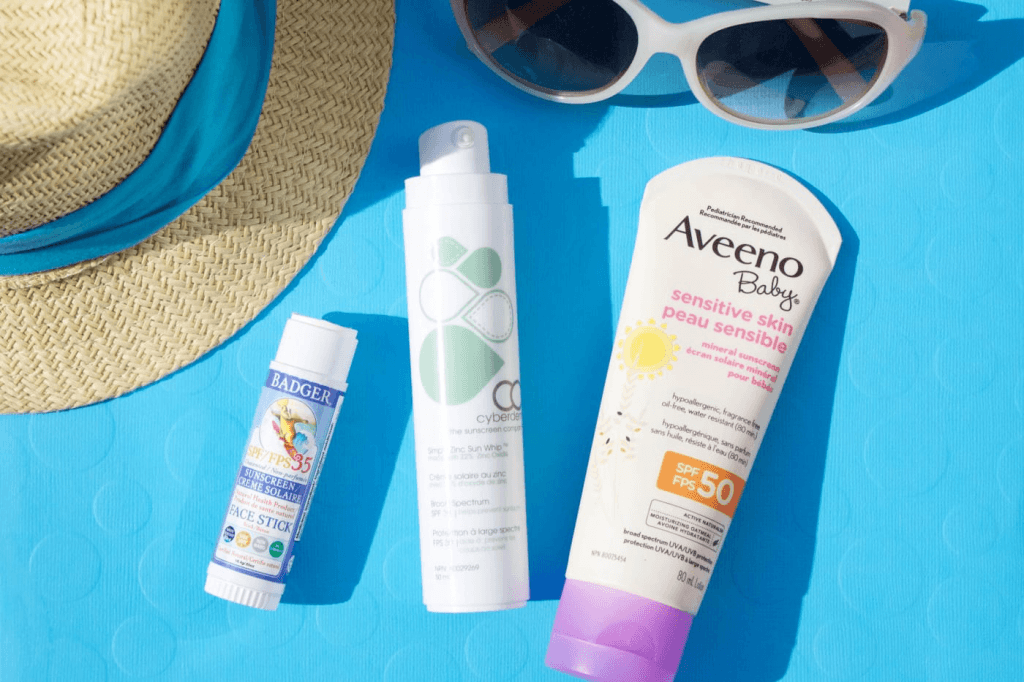Unsafe sunscreen chemicals kill reefs
4 min read
Physical vs. Chemical Sunscreen / theskincareedit.com
By RILEY RANDALL
Staff Writer
Summer is officially over. As the fall semester drones on, students are looking forward to their next big vacation, winter break. For those who are fortunate enough to travel, visiting tropical locations or going on a wintertime cruise are popular choices.
However, few people know how much they affect the environment, particularly the coral reef systems, when they embark on these excursions. With widespread winter and summer vacation spots alongside the reef systems, the coral has a year-round assailant–sunscreen.
Reef safe sunscreens should be used instead of regular versions in a conscious effort to protect the environment. They are widely available and priced similarly to their dangerous counterparts, all while still providing that essential UV protection.
Coral reefs have been decimated year after year all around the globe. According to the Global Coral Reef Monitoring Network, about one-fifth of the world’s coral reefs have already been lost or severely damaged. Another 35 percent could be lost within 10-40 years. It’s happening at twice the pace of rainforest decline, yet coral reefs receive much less attention and news coverage.
Some of the largest threats to coral reef systems are the chemicals found in a common vacation product: sunscreen. Many of the popular brands of sunscreen contain harmful chemicals that not only affect coral, but also the surrounding marine life. Chemicals like Oxybenzone (Benzophenone-3 or BP-3) and Benzophenone-2 (BP-2) have been linked by numerous studies by the National Oceanic and Atmospheric Administration (NOAA) to the damage and destruction of coral reef systems. Some of these lingering effects include “bleaching,” DNA damage, abnormal skeleton growth and gross deformities of baby coral. These harmful chemicals are not only found in sunscreen, but in over 3,500 other products as well such as lotions, fragrances and other skincare products.
A simple search on Amazon for “reef safe sunscreen” pulled up hundreds of results that started for as low as $8.99 for a normal 6-ounce bottle. Many popular sunscreen brands are following the direction of this growing trend, which will only bring prices to a more competitive level to keep their sales up. In fact, in July 2018, Hawaii banned the sale of any sunscreen that isn’t already reef safe. Key West, Florida has recently done the same, with both laws going into effect in 2021.

I’ve personally visited and have been scuba diving at both locations to see the effects for myself. The dives are somber in nature, with thousands of dead and broken pieces of coral lying on the ocean floor, bleached beyond recognition of what it once was. But it was incredibly encouraging to see that even without the laws in effect yet, reef safe sunscreens were almost exclusively carried on the shelves in stores nearby. Even the dive boats carried it onboard, free of charge to any diver about to explore the nearby reefs. Efforts like these are what will finally make a difference.
Although it’s great to see young people like Greta Thunberg speak out against climate change, there is little coverage on how human activity affects the coral reef systems of our planet. For example, Florida has been experiencing coral bleaching for years now with hardly a clue as to the specific cause up until earlier this year.
According to a study posted in The Washington Post, coral coverage in the Florida Key has declined from 33 percent in 1984 to just six percent in 2008. They found warmer waters were not the primary cause, but that on-shore water treatment plants seemed to be at fault. High amounts of rain in Florida causes run-off of fertilizer chemicals into the oceans, which in turn creates massive algae blooms that kill off the coral.
The most interesting part of this run-off is that most of it does not flow directly to the ocean. Water treatment plants receive the large majority of the nitrogen and phosphorus-based fertilizers, yet they aren’t filtering out these chemicals from the water. Improved water treatment plants in the Dutch Caribbean have been known to extract this chemical. In this era of constantly improving green technologies, Florida should be able to install the same type of systems.
Before you start packing for your next big tropical trip, think twice about the effect you may have on coral reefs and the surrounding marine life when you choose your sunscreen. In a quote by James Porter, an emeritus professor of ecology at the University of Georgia, “the fight to preserve coral reefs requires local, not just global, action.”


